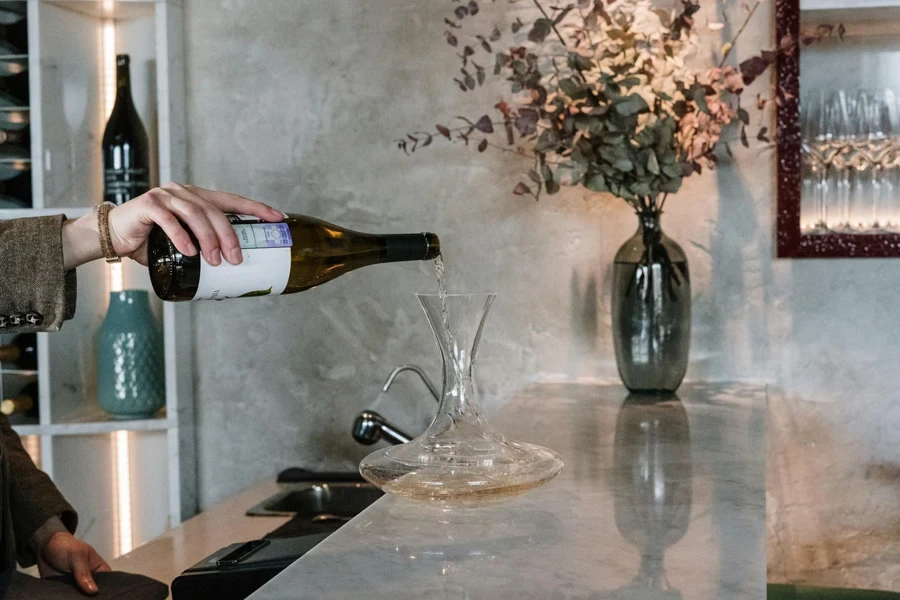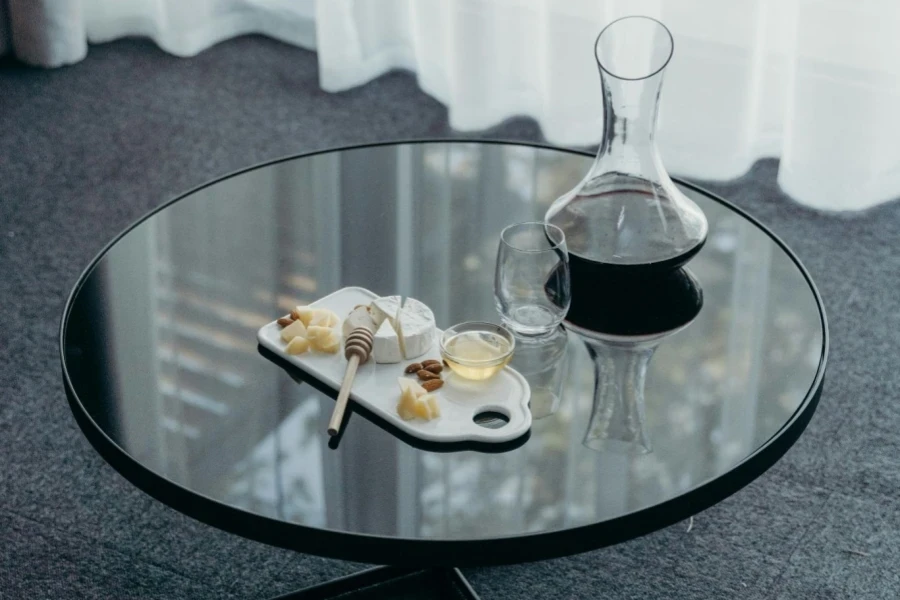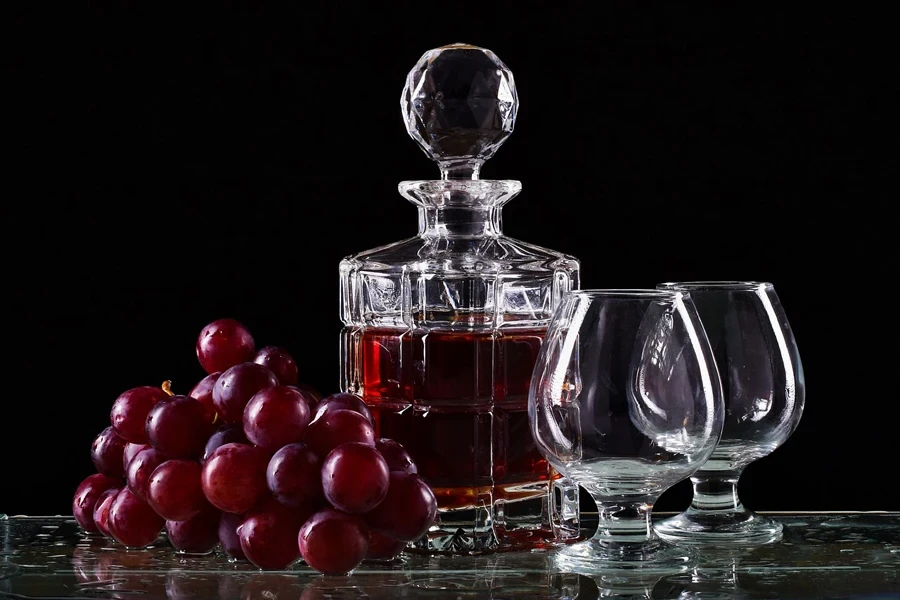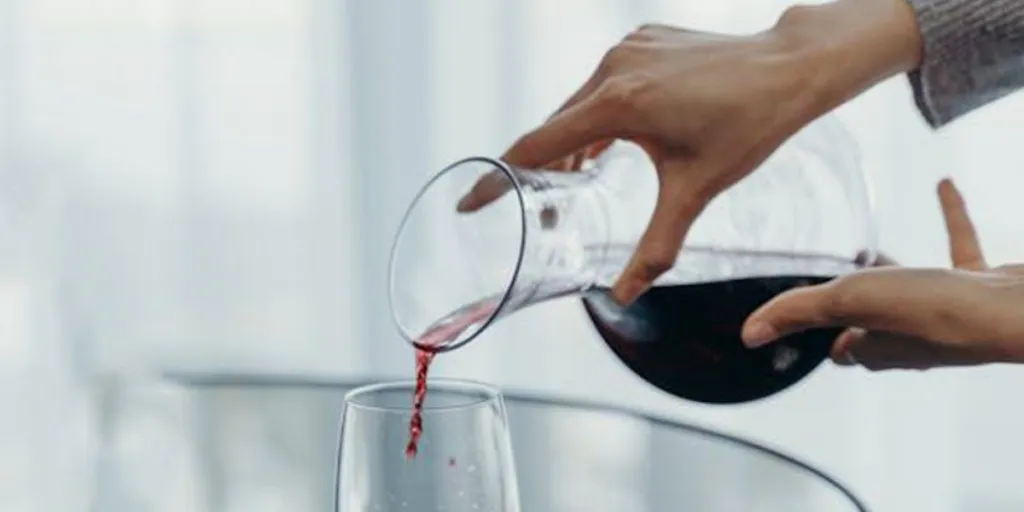Once perceived only as the bougie prerogative of Michelin-starred restaurants and high-end hotels, wine decanters are slowly but steadily entering the homes of thousands of people worldwide.
Valued at USD 385.82 million in 2024, the decanter market is set to reach USD 510.01 million. By 2031, expanding at a compound annual growth rate (CAGR) of 3.55% from 2024 to 2031. Many factors, including the increasing popularity of wine consumption against beer and spirits in the US and the trend of home entertainment, are driving this incredible growth.
This article provides valuable information about wine decanters so that any store manager, buyer, or owner can meet the growing demand for this new, exciting product.
Table of Contents
Why do people buy wine decanters?
The different types of decanters
Tips for choosing the right wine decanter
Final thoughts
Why do people buy wine decanters?

A wine decanter is a transparent glass, crystal, or plastic container that comes in many styles and shapes. The most common one is similar to a jug with a very wide base and a very long neck.
As the name suggests, this accessory is used for decanting wine, which means letting it breathe and removing sediments. In fact, the verb “to decant” comes from the Latin “decantare,” which means separating particles suspended in a liquid by sedimentation.
Thanks to the decanter, a wine that has been closed for years in a bottle can oxygenate and release all its aromas and notes. In other words, people like to pour their wine (especially red wine) into a decanter for about 1 to 3 hours before serving it because this process makes it taste better. Also, it is important to pour the wine into a decanter slowly, being careful about the sediment depositing on the bottom—this way, it won’t finish up in the glasses!
In addition to being a functional tool, a wine decanter is an elegant accessory that many use as a decorative element on the table.
The different types of decanters
Not all wine decanters are the same, and the difference between the various models available on the market usually comes down to three characteristics: shape, material, and size.
Each type of decanter has advantages, and it’s essential to be aware of them to advise customers and lead them toward the purchase that best suits their needs.
Shape

The traditional wine decanter features a flat, rounded base with a thick bottom and a long neck, making it look like a contemporary ampoule. It is a top-selling article worldwide and ideal for decanting young red wines or old white wines.
The swan decanter (also called a U-shaped decanter) is the go-to model for those looking for an elegant conversation piece to put on their table during dinner. Its elongated shape, which resembles a swan’s neck, makes it suitable for all kinds of wine.
Last but not least, horn wine decanters and duck wine decanters are shorter and designed to oxygenate vintage wines for longer. Their larger base improves stability; sometimes, they even come with a handle on the side for easy pouring. Typically, these types of decanters are thick and sturdy.
Material

Glass or crystal are the most commonly used wine decanter materials. Choosing between the two is fundamental because each material has pros and cons, and their quality guarantees a better result.
Crystal wine decanters are more expensive but are also much more sophisticated and allow for better oxygenation than glass decanters. Although it has a cheaper price point, glass is very porous and therefore tends not to retain the smell of the wine once it is poured, while crystal has minimal porosity.
Families with small children and those just beginning to explore the art of wine tasting may also be interested in buying a plastic wine decanter. This option is much cheaper than the other two and safer in case of falls.
Size

The size of a decanter is a crucial aspect to consider when choosing wine-tasting equipment. Decanter capacity can vary greatly, with the majority being around 0.75 liters (25.4 US fl oz) up to 1.5 liters (50.7 US fl oz) or more.
The decanter size should be based on various factors, including the type of wine that will be decanted and the number of people participating in the tasting. Decanting an aged red or complex white wine may require a larger decanter, as it offers a greater contact surface between the wine and the air, thus improving oxygenation.
There are also small wine decanters that are comfortable and glass-sized. Many of these are directly applicable to the bottle and feature a built-in wine aerator to improve their effectiveness.
Tips for choosing the right wine decanter
When it comes to resellers and stores, the best option is to offer their customers a wide range of different wine decanters to choose from, depending on their specific needs.
For example, traditional decanters made of glass are a great starting point for everyone looking to buy their first decanter and an option that is both helpful and not too expensive. Crystal duck or u-shaped decanters are best for experienced wine tasters and those with an eye for design and expensive décor pieces. It’s also a good idea to focus on medium-sized wine decanters that can fit the content of a standard 0.75 liter (25.4 US fl oz) bottle.
When selling a wine decanter, it’s essential to consult clients and introduce them to a world that may be new to them. Choosing a suitable wine decanter is important in improving the tasting experience. First, they need to decide on the material based on its characteristics. Then, the decanter’s shape, which not only influences the aesthetics but also the ease of use and effectiveness of the instrument, the degree of oxygenation of the wine, and the way the liquid appears when served at the table.
Generally speaking, decanters with a narrow neck are ideal for aged and complex wines, as they preserve their aromas better. On the contrary, decanters with a broader neck are suitable for young wines, which thus benefit from greater aeration.
Final thoughts

The wine decanter market is rapidly expanding, with expected growth reflecting the increased popularity of wine consumption in Asia and the US following the European trend and the home entertainment trend.
For retailers, it is essential to understand customer needs and offer a diverse range of decanters considering factors such as shape, material, and size. This will allow them to offer the right product for beginners, wine lovers, and connoisseurs, satisfying the different needs of consumers and improving their tasting experience.




